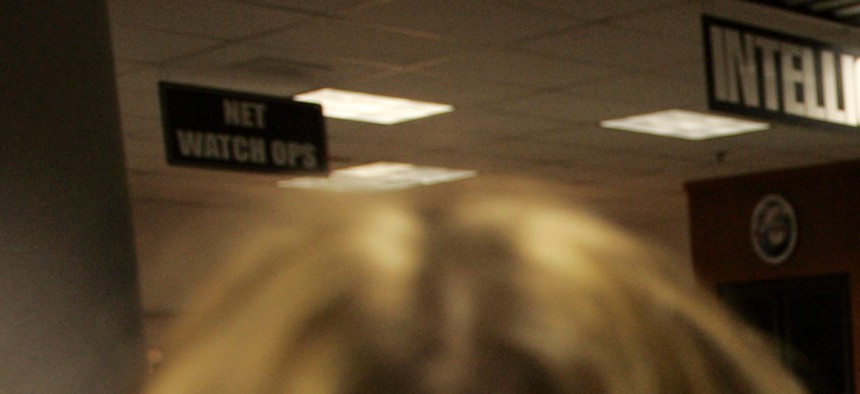Government Agencies Have No Way of Warning Each Other About a Cyber Attack, IG Says
The Pentagon, Homeland Security and NSA have no way of sharing warnings of cyber attacks with each other or with industry, a DHS inspector general report finds. By Aliya Sternstein
The departments of Homeland Security and Defense, including the National Security Agency, have no way of sharing current alerts about computer breaches with each other or industry, an inspector general memorandum reveals.
The problem is not an inability to document incidents, but, rather, an inability to alert potential victims as the situation unfolds and to provide instructions.
There is one system for circulating event reports, a separate one for circulating directions on how to respond, and no real-time system for joining the two, according to an Oct. 24 DHS IG report released this week.
The missing technology should be housed at the 24-hour National Cybersecurity and Communications Integration Center, a DHS organization that distributes information among civilian agencies, the intelligence community, Defense components and critical infrastructure sectors, such as the power industry.
The report suggests the chasm between NCCIC and various agency operations centers might open the door to incoming threats, such as malicious code targeting military systems or oil and gas companies.
"According to the NCCIC director, there is no national system or common cyber tool currently in place for the federal cyber centers to share information," the report found.
Officials at NCCIC, pronounced "N-kick," acknowledged that a common cyber system could allow the separate centers to exchange "actionable information," electronically and on a real time basis, with key industries to minimize damage.
[Read More: When Would Cyber War Lead to Real War?]
Right now, NCCIC has a ticketing system that documents incident details, such as the time of the abnormal event, date it was reported, and phone conversations about the situation.
Meanwhile, NCCIC and the FBI have a system that disseminates bulletins to companies and agencies with instructions on preventing destructive attacks and protecting sensitive data.
But the two systems are not connected.
"This ticketing system does not link situational awareness products (i.e., alerts and bulletins) that have been issued and are associated with a specific cyber incident, threat or vulnerability," the memo states.
Another disconnect: "Federal cyber operations centers often share their information with one another. However, no single entity combines all information available from these centers and other sources to provide a continuously updated, comprehensive picture of cyber threat and network status to provide indications and warning of imminent incidents, and to support a coordinated incident response."
NCCIC does not possess the technology necessary to broadcast ongoing updates and avoid duplicate communications, the inspector general reported.
As remedies, IG officials suggested a knowledge management database, automatic calling trees and a communications-tracking system.
These technologies will require additional funding, Homeland Security officials told inspectors. Officials plan to improve existing information sharing tools and bring new capabilities online during the next four years, they said.
"Technologies and processes to improve discoverability and availability of data between and among the cyber operations centers serve as a foundation to the information sharing capability sets. These capabilities, coupled with automated machine-to-machine data transfer, will greatly improve the ability to link data sets and improve situational awareness," Suzanne Spaulding, acting undersecretary of the DHS National Protection and Programs Directorate, wrote in a Sept. 5 written response to a draft report.
NEXT STORY: Indefinitely Hovering Drone Maker Gets a Boost






